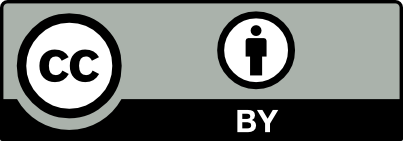Statement of Purpose |
|
The Driving OER Sustainability for Student Success (DOERS3) Collaborative is a group of 36 public higher education systems and statewide/provincewide organizations that are committed to supporting student success by promoting free, customizable open educational resources (OER). Launched in 2018, DOERS3 helps member organizations implement, scale, and sustain OER by advancing research and policy, sharing tools and learnings, and showing how OER can foster equity and student success.
DOERS3 positions member organizations to realize the promise of high-quality, accessible, and sustainable OER implementations to achieve equity and student success at scale. Leveraging the collective strength of the Collaborative, DOERS3 members build capacity to take established OER initiatives to scale and shape national and state innovation in the areas of OER research, data, policy, accessibility, equity and quality. As a group, DOERS3 members believe in supporting student success through the implementation of affordable, openly-licensed alternatives to high-priced, traditionally-copyrighted, instructional materials. We recognize that the choice of instructional materials remains the purview of the faculty, and that OER are an increasingly viable option for faculty seeking to prepare and curate relevant and engaging course materials. |
DOERS3 positions member organizations to realize the promise of high-quality, accessible, and sustainable OER implementations to achieve equity and student success at scale |
Guiding Principles
|
The following principles guide the Collaborative’s work and the efforts of the public higher education systems and statewide/provincewide OER initiatives that make up its members. As part of the Collaborative, members endeavor to:
|
DOERS3 members collaborate in cross-state/province projects to advance research, policy, accessibility, equity and quality |
Working Definitions
For the purposes of this Collaborative:
Open Educational Resources (OER) are defined as instructional materials that are fully accessible and reside in the public domain or have been released under an intellectual property license that permits their free use and re-purposing by others. Open educational resources include full courses, course materials, modules, textbooks, streaming videos, tests, software, and any other tools, materials, or techniques used to support access to knowledge (adapted from the Hewlett Foundation definition of OER).
Fully accessible refers to the practice of designing learning materials that can be navigated and understood by all users, including those who have visual, auditory, motor, or cognitive disabilities (adapted from the National Federation of the Blind and the Rouse and Souza definitions of accessibility).
Open Educational Resources (OER) are defined as instructional materials that are fully accessible and reside in the public domain or have been released under an intellectual property license that permits their free use and re-purposing by others. Open educational resources include full courses, course materials, modules, textbooks, streaming videos, tests, software, and any other tools, materials, or techniques used to support access to knowledge (adapted from the Hewlett Foundation definition of OER).
Fully accessible refers to the practice of designing learning materials that can be navigated and understood by all users, including those who have visual, auditory, motor, or cognitive disabilities (adapted from the National Federation of the Blind and the Rouse and Souza definitions of accessibility).
History
|
In 2017, the University System of Maryland, City University of New York, and State University of New York announced major expansions of their OER initiatives across all public postsecondary institutions in Maryland and New York. Leaders from these three large-scale OER initiatives met to discuss how they could further advance the role university system and statewide higher education OER initiatives play in scaling and sustaining academic innovation related to OER. Out of these conversations, DOERS3 recognized that other higher education organizations would find a network of experienced peers to be a valuable resource in their own efforts to advance the implementation of OER programs at their institutions and in their areas. With the support of system offices and state/province governments, and the goal of developing a self-sustaining business model for OER, these initiatives promise to reach impressive scale and improve access, affordability, and achievement for millions of college students.
|
With the support of their state/province governments these initiatives promise to reach impressive scale and improve access, affordability, and achievement for millions of college students |

